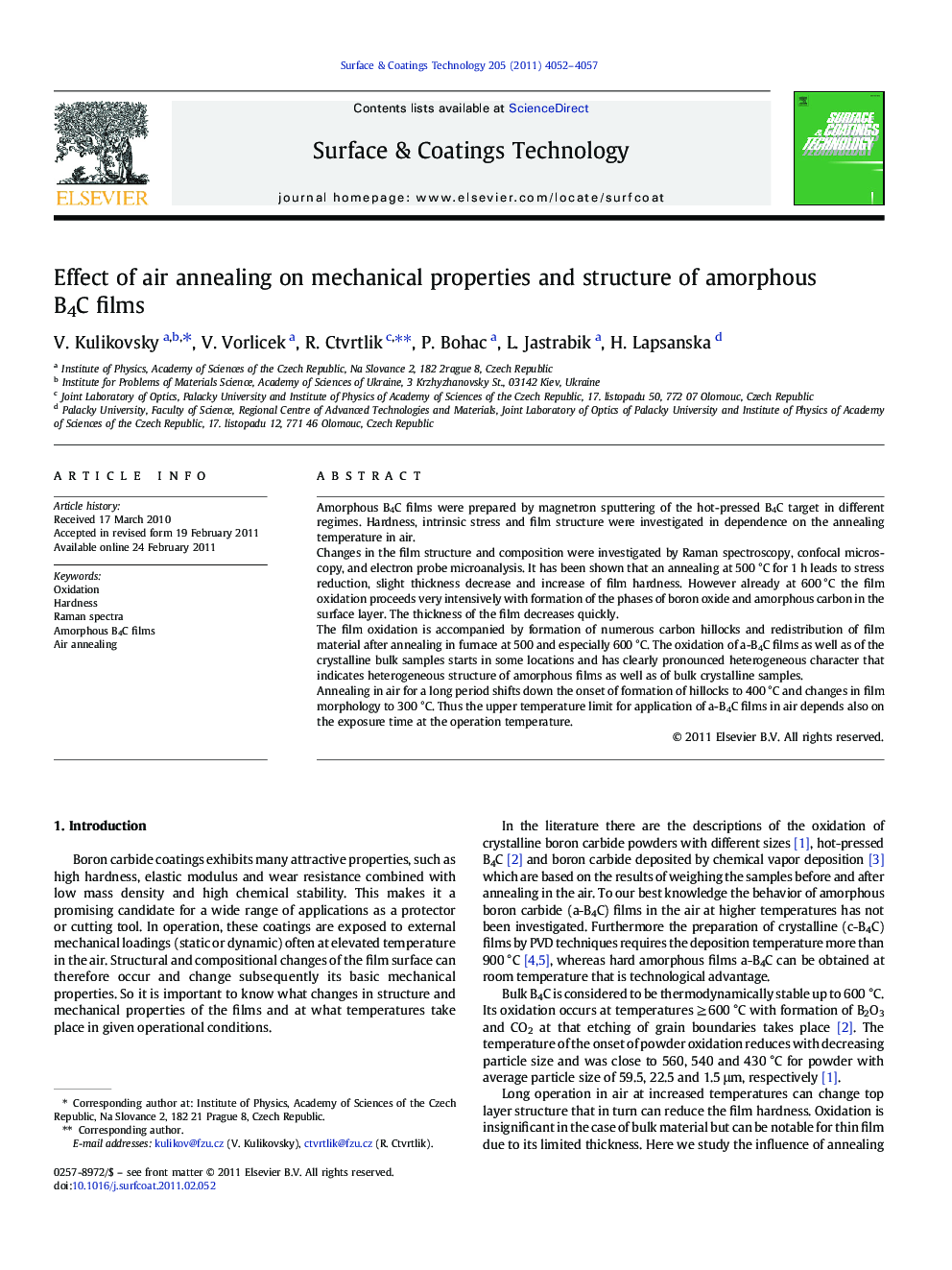| Article ID | Journal | Published Year | Pages | File Type |
|---|---|---|---|---|
| 1659194 | Surface and Coatings Technology | 2011 | 6 Pages |
Amorphous B4C films were prepared by magnetron sputtering of the hot-pressed B4C target in different regimes. Hardness, intrinsic stress and film structure were investigated in dependence on the annealing temperature in air.Changes in the film structure and composition were investigated by Raman spectroscopy, confocal microscopy, and electron probe microanalysis. It has been shown that an annealing at 500 °C for 1 h leads to stress reduction, slight thickness decrease and increase of film hardness. However already at 600 °C the film oxidation proceeds very intensively with formation of the phases of boron oxide and amorphous carbon in the surface layer. The thickness of the film decreases quickly.The film oxidation is accompanied by formation of numerous carbon hillocks and redistribution of film material after annealing in furnace at 500 and especially 600 °C. The oxidation of a-B4C films as well as of the crystalline bulk samples starts in some locations and has clearly pronounced heterogeneous character that indicates heterogeneous structure of amorphous films as well as of bulk crystalline samples.Annealing in air for a long period shifts down the onset of formation of hillocks to 400 °C and changes in film morphology to 300 °C. Thus the upper temperature limit for application of a-B4C films in air depends also on the exposure time at the operation temperature.
Research highlights► Air annealing, mechanical properties and structure of amorphous B4C films. ► Thickness and film composition is stable with annealing for 1 h up to 400 °C. ► Stress reduction, hardness increase, start of carbon hillock formation at 500 °C. ► Rapid thickness reduction and intensive oxidation process at 600 °C. ► Long period annealing shifts the onset of formation of hillocks to 300–400 °C.
